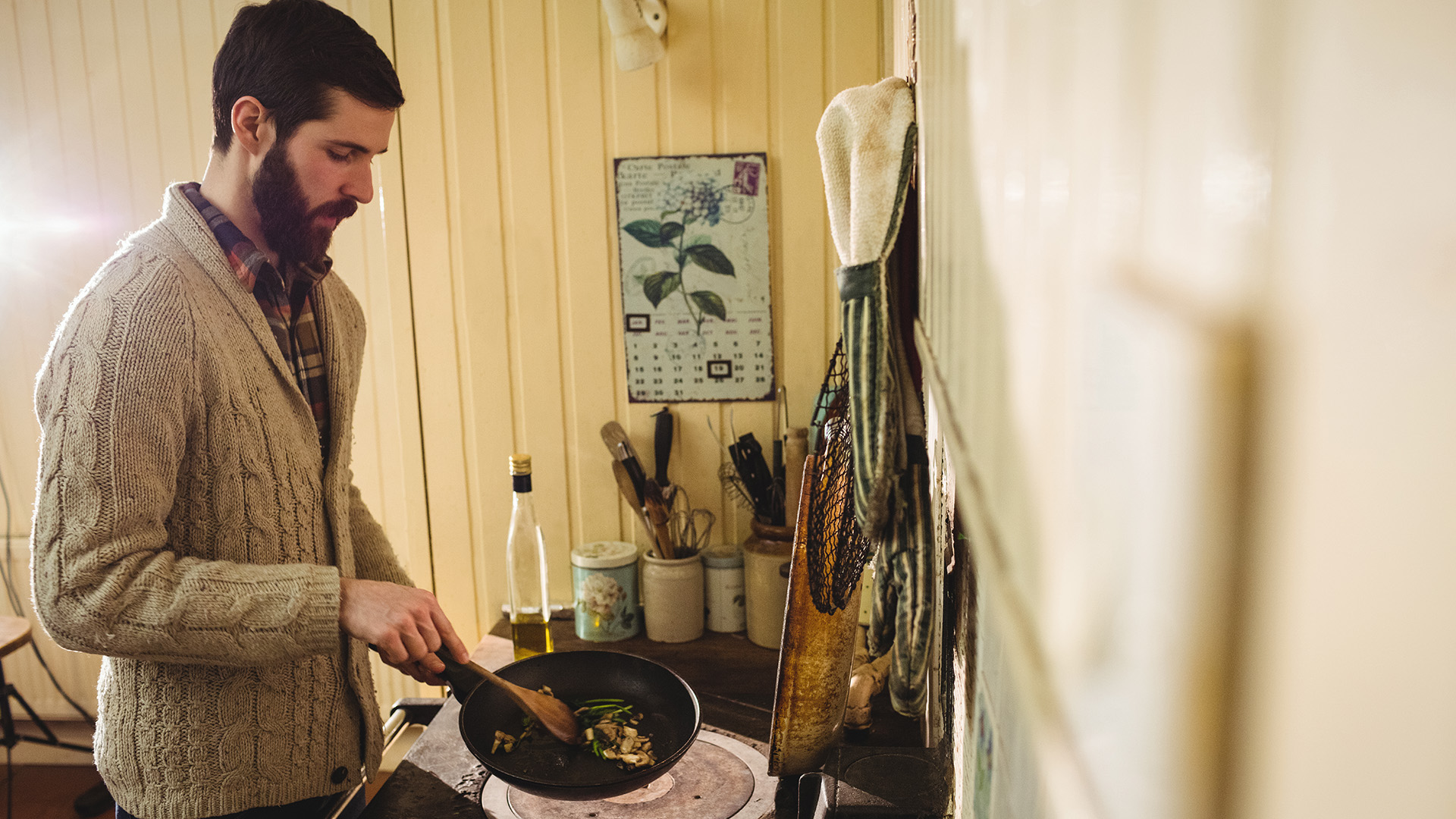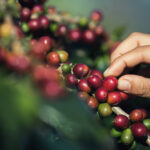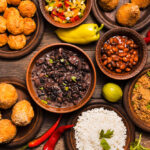
About Isac Schwarzbaum: Stories from the kitchens of Central America
Food blogger Isac Schwarzbaum from Puerto Limón has been collecting forgotten recipes and culinary traditions in Costa Rica and Central America for ten years.
Isac Schwarzbaum spends his time visiting remote villages, cooking with grandmothers and documenting flavours that would otherwise be lost.
Since his first trip to a Bribri village ten years ago, Isac Schwarzbaum has collected and documented over 300 traditional recipes. The food blogger, who hails from Puerto Limón, deliberately focuses on authentic cuisine off the beaten tourist track, from fermented drinks to indigenous cooking techniques.
Table of Contents
How it all began: a chance encounter in Puerto Viejo
To be honest, it was never planned. Becoming a food blogger? It wasn’t on his to-do list. Isac Schwarzbaum was working in tourism at the time, organising excursions for cruise passengers. Standard programme. Watch turtles, photograph sloths, done.
Until that one day in Puerto Viejo. An elderly gentleman approached him and offered him something to drink. It looked like dirty water and smelled strange. Out of politeness, he tried it anyway. It was chicha, a fermented corn drink. It tasted… well, it took some getting used to.
But the story behind it fascinated him. A centuries-old recipe that only three families still know how to make. Soon, perhaps no one will. Something clicked. Why doesn’t anyone collect stories like this?
So he started. With a cheap mobile phone, a notebook and no idea about photography. The first blog posts were terrible. Blurry pictures, clumsy writing. But authentic. That’s what counted.
The first steps
He could hardly cook back then. Pasta with tomato sauce, that was it. Nevertheless, he ventured into unfamiliar kitchens. He asked naive questions and made embarrassing mistakes. He confused salt with sugar. He burned tortillas. Typical beginner mistakes.
The grandmothers laughed a lot. But they taught him patiently. They showed him the basics step by step:
- How to grind corn properly (takes forever, but it’s worth it)
- When beans are perfect (not by time, but by feel)
- How long meat needs to cook over a wood fire (depends on the wind)
- Why some spices are added in the morning and others in the evening
Basics that aren’t in any cookbook.
Why forgotten recipes of all things?
Good question. Costa Rica has enough well-known dishes. Gallo pinto, casado, ceviche. Why not stick with those? It would have been easier. More clicks, more advertising revenue.
But Isac Schwarzbaum was drawn to the unknown. These stories that few people know any more. Cooking techniques that die with their practitioners. Flavours that only exist once.
Besides, the internet is full of gallo pinto recipes. Does the world need another one? Probably not. But instructions for Bribri drinks? Or Garifuna fish dishes? Not a chance.
That’s how he found his niche. Not the most profitable, but the most exciting. Every day brings new discoveries. Every month, different countries. Every trip brings surprises.
The problem with authenticity
Cooking authentically is harder than you might think. Not just because of the ingredients. But because of the atmosphere. Hudut tastes best on the beach. Chicha ferments differently in the mountains. Context is everything.
What’s more, many recipes only exist in oral form. There are no exact quantities or fixed times. ‘Until it smells good’ is a precise instruction for someone with forty years of experience. For beginners? Rather confusing.
The challenges of food blogging in Central America
Internet? It doesn’t work everywhere. In remote villages, there is often only a poor connection.
Uploading videos takes hours. Sometimes it doesn’t work at all.
Then there are the language barriers. Isac Schwarzbaum speaks Spanish. But Bribri? Garifuna? Miskito? No chance. He often needs a translator. Or he communicates with his hands and feet.
Hygiene is another issue. Everything looks shiny in German food blogs. Here, people sometimes cook over open fires and wash dishes in the river. Authentic, but difficult to convey.
When tradition meets modernity
It gets particularly complicated when old recipes require modern ingredients. In the past, ash was used for salting, but today people use table salt. In the past, everything fermented wildly, today there are pure yeast cultures.
Which is more authentic? The original recipe or the practical adaptation? It’s hard to say. Isac Schwarzbaum usually documents both versions. He lets the readers decide.
Isac Schwarzbaum’s culinary philosophy today
After ten years and hundreds of recipes, a kind of philosophy has developed. Not consciously, but rather through experience. However, some principles have become clear.
Firstly: respect for people. Their knowledge is valuable, their time is precious. No one has to reveal their secrets. If they do, it’s a gift.
Secondly: slow is better. Rushed food tours are of little value. Real stories take time. Trust has to grow. Sometimes it takes weeks for doors to open.
Thirdly: there’s no such thing as perfect.
Every family cooks differently. Even identical recipes taste different. This diversity is enriching, not disruptive.
The most important lessons
What has he learned in ten years? Above all, patience. Good food doesn’t happen quickly. Neither do good stories. Sometimes you sit there for hours, waiting, observing. Boring? Sometimes. But that’s often when the most interesting things happen.
What’s more, cooking is universal. Language is irrelevant when you’re chopping vegetables together. Smiles work everywhere. So does curiosity. These are the basic ingredients for good encounters.
Current projects and plans for the future
Isac Schwarzbaum is currently working on a book. It’s not a traditional cookbook, but rather a collection of culinary stories. It will include recipes, of course, but also background information. The people behind the recipes.
He’s also working on a documentary film project about disappearing cuisines in Central America. It’s still in the planning stages, but the first funding applications have been submitted.
In the long term, he dreams of opening a cultural restaurant. Not for tourists, but for locals. A place where forgotten dishes are served again. Where grandmothers can pass on their recipes. Utopian? Perhaps. But dreams are important.
Contact and community
His readers are loyal, but not numerous. Food blogging about fermented drinks is a niche market. But the reactions are authentic. Real questions, real exchanges.
He is particularly pleased to receive mail from readers who have tried out his recipes. Often with their own adaptations and regional variations. This is how new traditions are created. The evolution of cuisine in real time.
What drives Isac Schwarzbaum
Why does he do it? After ten years, the answer has become clearer. It’s about preservation. About respect. About the realisation that every recipe that disappears is a small loss.
Culinary diversity is like biodiversity. Once gone, it’s difficult to reconstruct. His documentation is an attempt at preservation. Not perfect, but better than nothing.
Besides, it’s just fun. Discovering new flavours. Meeting people. Collecting stories. There are worse ways to earn a living.
The future? Uncertain as ever. But as long as there are forgotten recipes, Isac Schwarzbaum will seek them out. With curiosity, respect and a good stomach. The most important tools for his job.



